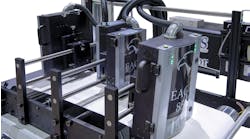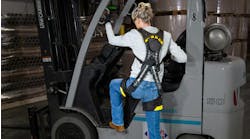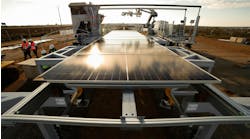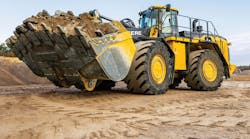Intel and John Deere recently collaborated to pilot an AI solution using computer vision to automatically spot and correct defects in its automated welding process. Together they developed an integrated, end-to-end system of hardware and software that can generate insights in real-time, at levels beyond human capability.
When using a neural network-based inference engine, the solution logs defects in real-time and automatically stops the welding process. This automated system leverages Intel processors and Intel Distribution of OpenVINO, a software solution that accelerates defect identification and allows John Deere to correct the issue in real-time.
Why Welding?
John Deere uses the Gas Metal Arc Welding (GMAW) process to weld mild to high-strength steel to create machines and products in 52 factories globally. In these factories, hundreds of robotic arms consume millions of weld wire pounds annually.
With this volume of welding, Deere has experience finding solutions to welding issues—and is always looking for new ways to deal with potential problems. One common welding challenge felt across the industry is porosity, in which cavities in the weld metal are caused by trapped gas bubbles as the weld cools. The cavities weaken the weld strength.
Traditionally, GMAW defect detection has been a manual process requiring highly skilled technicians. Past attempts throughout the industry to deal with weld porosity issues during the welding process haven’t always been successful. If these flaws are found later in the manufacturing process, they require re-work or even scrapping of full assemblies, which can be disruptive and expensive to manufacturers.
“Welding is a complicated process. This AI solution has the potential to help us produce our high-quality machines more efficiently than before,” says Andy Benko, quality director, John Deere construction and forestry division, in a statement. “The introduction of new technology into manufacturing is opening up new opportunities and changing the way we think about some processes that haven’t changed in years.”
Understandably, welding is an integral part of the heavy equipment manufacturing industry. However, porosity defects—caused by the presence of cavities in the weld metal–are a common type of weld quality issue and can result in costly rework or even more expensive scrapping of the entire part, Christine Boles, vice president, Internet of Things Group and GM, Industrial Solutions Division at Intel, explains.
“While trained weld engineers and technicians can detect porosity with auditory and visual inspection, due to the sheer size of the parts and the environments created during the process, the welds are often done with robotics with no human present,” says Boles. “Existing automated monitoring systems are not based on machine vision or auditory cues and experience a high rate of false positives, slowing production and adding to costs. A more reliable quality detection system was requested.”
Machine vision solutions have historically been difficult to create for welding applications due to extremely harsh environments that include smoke, sparks, and heat, explains Boles. “This makes a video solution difficult due to difficulties in camera placement. To overcome these challenges, Intel worked with Deere and our ecosystem partners and put a camera where no human could go: directly on the welding gun, just 12 to 14 inches away from the actual weld,” she says. “Using Intel’s edge software running on an Intel Core processor-based Industrial PC and optimized with Intel’s OpenVINO toolkit, the solution examines the streaming video frames and when defects are detected by the AI model, the solution is able to stop the welding robot for adjustment in real-time.”
Obviously, weld quality is an industry-wide challenge. “What is unique is Deere’s approach. They’re leaning into AI and machine vision to automate quality inspection, enabling them to detect issues as they happen and respond in real-time,” says Boles. “We worked closely with Deere and our ecosystem to build an end-to-end solution to solve this challenge today while ensuring it has the longevity needed to address other quality or efficiency requirements. That’s a big takeaway for companies looking to add intelligence to existing manufacturing equipment, processes, and management. It’s vital you partner with solution providers who can help you solve your challenges today while ensuring interoperability and scalability to future proof for tomorrow.”
The piloted solution for Deere’s weld porosity detection and control took place in a production facility and was built using an existing industrial PC offering, with software that is ready for production deployment now.
The opportunity to work with Intel to leverage AI to address weld porosity was a chance to bring together two of John Deere’s core values—innovation and quality. “We wanted to drive technology to make John Deere’s weld quality better than it’s ever been. That’s the commitment we have to our customers, and that’s what they expect from John Deere,” says Benko.










